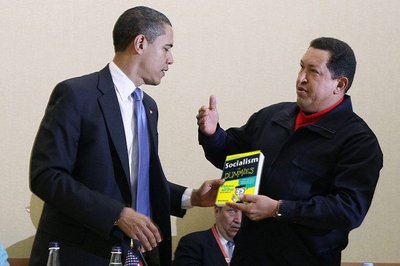The first is an account of the events surrounding my first college St. Patty’s day, celebrated on a campus truly dedicated to the holiday:
I don’t think there will ever be a St. Patrick’s Day when I don’t think about my first semester of college when I enrolled in the Spring term at the University of Missouri-Rolla campus. UMR is mainly an engineering college but it was close to where I lived at the time and a convenient way for me to knock out some general liberal arts credits before transferring to the main Mizzou campus in Columbia.
St. Patrick’s “Day” was actually a 10-day party at UMR. The campus was about 90% male then, almost all in grueling engineering classes that seemed to require binge drinking in order to cope. The reason St. Pat is such a big deal at UMR is because he is deemed to be the patron saint of engineers for having driven the snakes from Ireland and thereby creating the first worm drive (engineering humor). The rites and festivities of the season were under the auspices of the St. Pat’s Board: upper classmen (some I think were in their 30s) elected by their fraternities, eating clubs and campus organizations. For most of the year their duties seemed to be based around regular “meetings” marked by drinking and carousing. Come March, however, they were especially prominent in their filthy green coats (part of their semi-secret initiation rites) as they enforced the rules and protocols of the holiday (for those familiar with the St. Paul Winter Carnival – especially in the older days – think green Vulcans).
Part of the tradition was that all freshmen males were to have beards in the week or so leading up to St. Pat’s, and were to carry shillelaghs (an Irish cudgel). Most people think of shillelaghs as being a bit like walking sticks, but at UMR there were specific requirements: the shillelagh had to be at least two-thirds the height of the student and at least one-third his weight, and it had to be cut from a whole tree with at least some of the roots showing. The punishment for being caught beardless by a Board Member (and they usually traveled in packs of two or more) was to have your face painted green. The penalty for being without your shillelagh was to be thrown into Frisco Pond. Frisco Pond was actually the town’s sewage lagoon, but was called Frisco Pond because the St. Pat’s Board of 1927 rerouted the Frisco railroad into the pond after one of their meetings. I’m sure it seemed like a good idea to them at the time.
Fortunately I was able to cultivate my first beard, red and wispy as it was, and I cut myself a suitable cudgel. Carrying books and a shillelagh of the stated dimensions was a challenge, and even more so when certain professors wouldn’t allow them into class, meaning they had to be stacked in the hallways and guarded because Board members liked nothing better than to snatch unattended shillelaghs and then wait for their rightful owners to appear — followed by a honking procession to Frisco Pond. (I did mention the campus was 90% male and fueled by alcohol, right? During St. Pat’s week the campus looked like No Name City from “Paint Your Wagon.”)
The reason we carried cudgels was in case a Board member approached you with a rubber snake and demanded that you “kill” it. This generally meant pounding on the snake with your cudgel until the Board member (not you) got tired. I weighed about 170 then; you do the math as to what my shillelagh weighed, minimum. I was fortunate to go largely unnoticed (as unnoticed as a guy carrying a tree can be) through most of this period. This was especially remarkable given that one of my friends from my hometown was on the Board. Toward the end of the week, however, he came up to me in the dining hall. “Red,” (for my beard) he said, “I think I see a snake.” With chants of “snake! snake! snake!” I was led outside and my “friend” tossed said snake on the ground. It landed, however, in a flower bed. “Freshman! Kill!” was the command. Hoisting my club over my head (and somehow not tipping over backwards) I brought it crashing down onto the hapless rubber creature — and even more hapless plants in the soft earth.
“Hit it again, it’s not dead,” was the order. I looked down once, then again. “Oh, it’s dead, alright,” I said. Actually, it would be more accurate to say, “Missing, presumed dead” because the rubber snake was nowhere to be found in the newly-created crater. Rather than wait around for CSI, or the gardener, the small group repaired to the dining hall to toast the success of the mission and I survived the week, the highlight of which was the St. Pat’s Parade.
In those days the St. Pat’s Board would be out early in the morning with mops and barrels of green paint, painting Pine Street in advance of the parade. High school bands from around the area would march, car dealers would drive demo models with pretty girls in them and various and sundry other parade standards would be present. In particular, however, I remember the Precision Pony Team: a group of students scooting along on empty pony kegs strapped to skateboards with rudimentary heads and yarn tails attached to the kegs. They wove patterns and formations down the street, stopping periodically to lift the tails of their “mounts” and drop handfuls of malted milk balls.
Much like the Macy’s Thanksgiving Day parade, the event culminated in St. Pat (not St. Nick) appearing on the route, riding a manure spreader and attended by his Guard. The duties of the Guard were largely to keep St. Pat vertical (he’d probably been drinking for four days straight) and to bring any fetching lasses from the crowd to St. Pat for a good luck kiss. (I did say the campus was 90% male and fueled by alcohol, didn’t I?).
After this particular St. Patrick’s Day all the other ones I’ve experienced have just kind of faded from my memory.
Note: the annual UMR St. Pat’s parade and related festivities still go on, but in a much more muted manner. A couple of alchohol-poisoning deaths were a factor (sad and true) to be sure, but I also think it was because some of those Board members finally graduated.
Also in keeping with this sainted day, here’s my “Fundamentals in Film” review of the great John Ford and John Wayne classic, The Quiet Man:
I can’t believe I missed the opportunity last Friday, St. Patrick’s Day, to feature John Ford’s
The Quiet Man, a classic Irish tale and my all-time favorite John Wayne film. Oh well, like the train to Castletown, better late than never.
This is a delightful and beautifully photographed movie with great performances by Wayne, Maureen O’Hara, Ward Bond and the quirky Irish cast. The depiction of the Irish as colorful but short-tempered folk much given to drinking and fighting is perhaps a bit politically incorrect in this day and age, but very entertaining. As it is Ford’s tribute to his homeland, it gets a pass from me (though I’m not Irish) Definitely not politically correct is the bit where a woman hands Wayne a stick “to beat the lovely lady” but it’s played for humor and within the context of the story (all I can say is you have to see it to understand).
The interesting contrast for me between this film and others in the Fundamentals series is that in other movies the main character doesn’t quite know what he is capable of and is unsure of what may happen when pushed to the brink. In this movie, Wayne (as Sean Thornton) is fully aware of what he is capable of and fears that it might happen again. He plays an American prizefighter who killed an opponent in the ring and has since retired and immigrated back to Ireland to buy the cottage where seven generations of his family lived. He is resolved to control himself and live quietly — even to the point of allowing people to think he’s a coward — but his pursuit of the cottage and the lovely and fiery-tempered Mary Kate Danaher (O’Hara) sets him on an inevitable collision course with Mary Kate’s brother, Will Danaher, the biggest, roughest and richest man in the county.
Sean’s patience and self-control in the face of the offenses and goads of the Danahers is admirable, but hardly to be seen in his courting of Mary Kate where he is more than a little forward. No doubt the script was written this way to accentuate the cultural differences between America and Ireland, but it does open the door for discussion with young viewers on proper behavior. The story also reminded me of some of the things my wife and I learned recently about why the Bible emphasizes that a husband love his wife but that a wife respect her husband. In this story Sean loves Mary Kate despite her temper and faults but fails to understand how important her things and dowry are to her. Mary Kate on the other hand loves her husband but struggles to respect him, at one point even leaving Sean, telling Michaleen Oge Flynn, “I love him too much to go on living with a man I’m ashamed of,” as he drives her to Castletown to catch the Dublin train. Both, however, come to understand each other and make a formidable team.
Despite the personal tensions and strife in the movie it is mainly a comedy and when the inevitable fight comes at the end of the movie the release is thoroughly enjoyable. All in all it is a very fun movie with some excellent performances and more than a few good points to make.
Questions to answer:
1. Why were Mary Kate’s possessions and dowry so important to her? Was it a matter of greed or something else? What was the significance of these things, given the place of women in that culture?
2. Why was Sean afraid to fight? What did he value more than his reputation?
3. Describe the differences between Sean’s American ways of courting and the Irish customs. What purpose do you think the Irish ways served, and do they have value today?
Great Quotes:
Michaleen: “What do they feed Irishmen in Pittsburgh to make them so big?”
Sean: “Steel, Micheleen, and pig iron in furnaces so hot a man forgets his fear of hell. And when you’re hard enough, and strong enough, other things.”
Mary Kate: “What manner of man have I married?”
Friend: “A better one than I think you know, Mary Kate.”
















